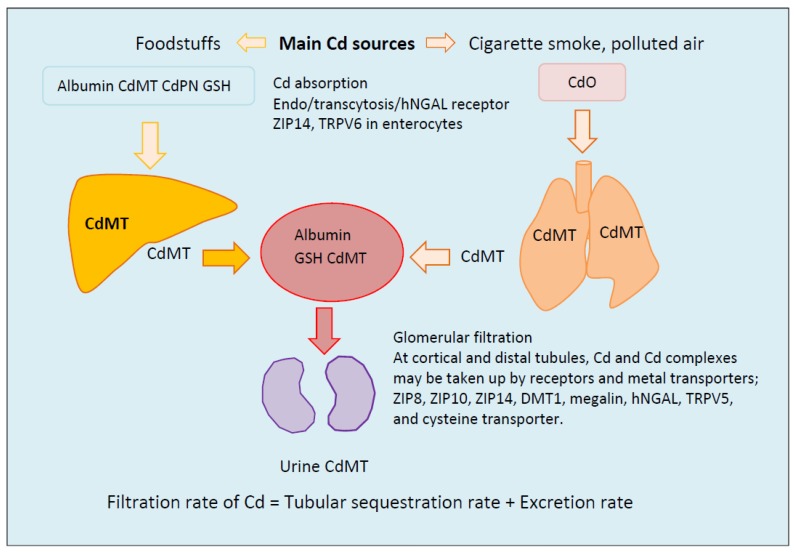Figure 1.
A schematic diagram showing cadmium uptake, transport and urinary excretion. Dietary Cd is absorbed and transported via the hepatic portal system to the liver, where it induces the synthesis of a specific metal binding protein, metallothionein (MT) to which Cd becomes tightly bound. MT-bound Cd is denoted as CdMT. Inhaled Cd induces MT in lungs, and CdMT is formed. CdMT formed by the enterocytes, liver and lungs enters the systemic circulation. Most cells, liver included, do not take up CdMT due to a lack protein internalization mechanism. In the kidneys, Cd, and Cd-complexes, including CdMT undergo glomerular filtration and either excretion or sequestration in proximal tubules. Because Cd in urine is bound to MT, excreted Cd is believed to have been filtered but not taken up by proximal tubules. Some urinary excretion of CdMT may result from re-entry of exosomes from proximal tubular cells into filtrate. CdMT = Metallothionein-bound Cd; CdO = Cadmium oxide; CdPN = Phytochelatin-bound MT; GSH = reduced glutathione; TRPV5 = Transient receptor potential vanilloid6TRPV5; TRPV6 = Transient receptor potential vanilloid6; hNGAL = human neutrophil gelatinase-associated lipocalin; ZIP = Zrt- and Irt-related protein of zinc transporter family; ZIP8 = Zrt- and Irt-related protein 8; ZIP10 = Zrt- and Irt-related protein10; ZIP14 = Zrt- and Irt-related protein 14.

